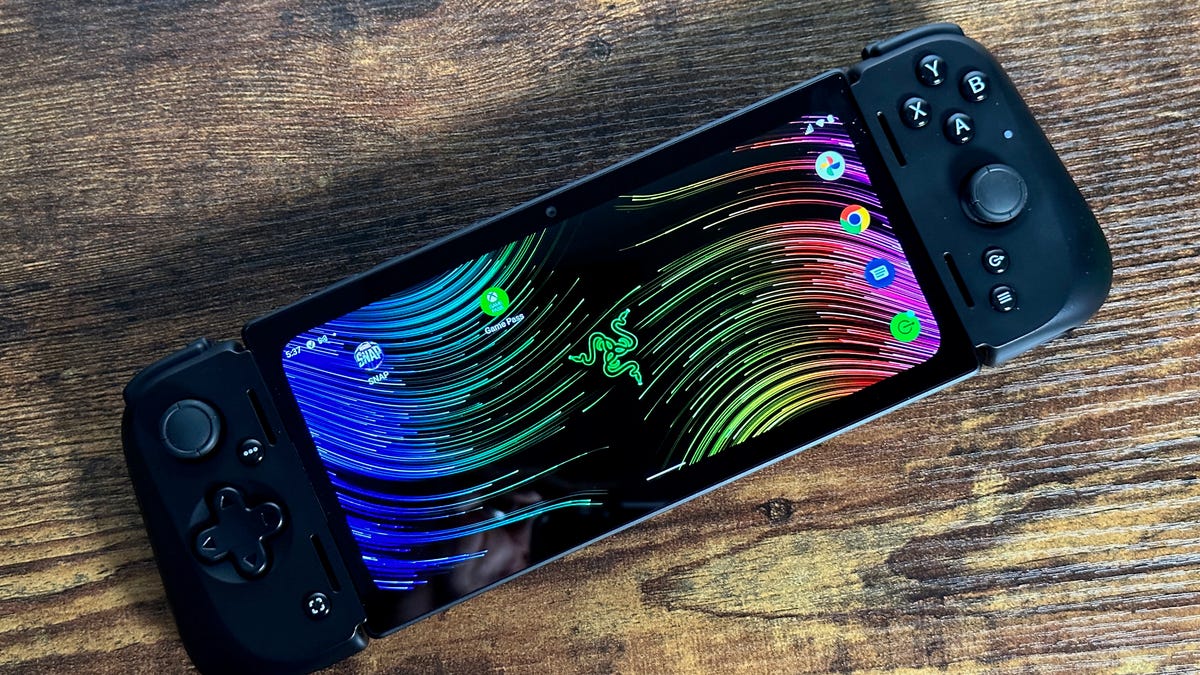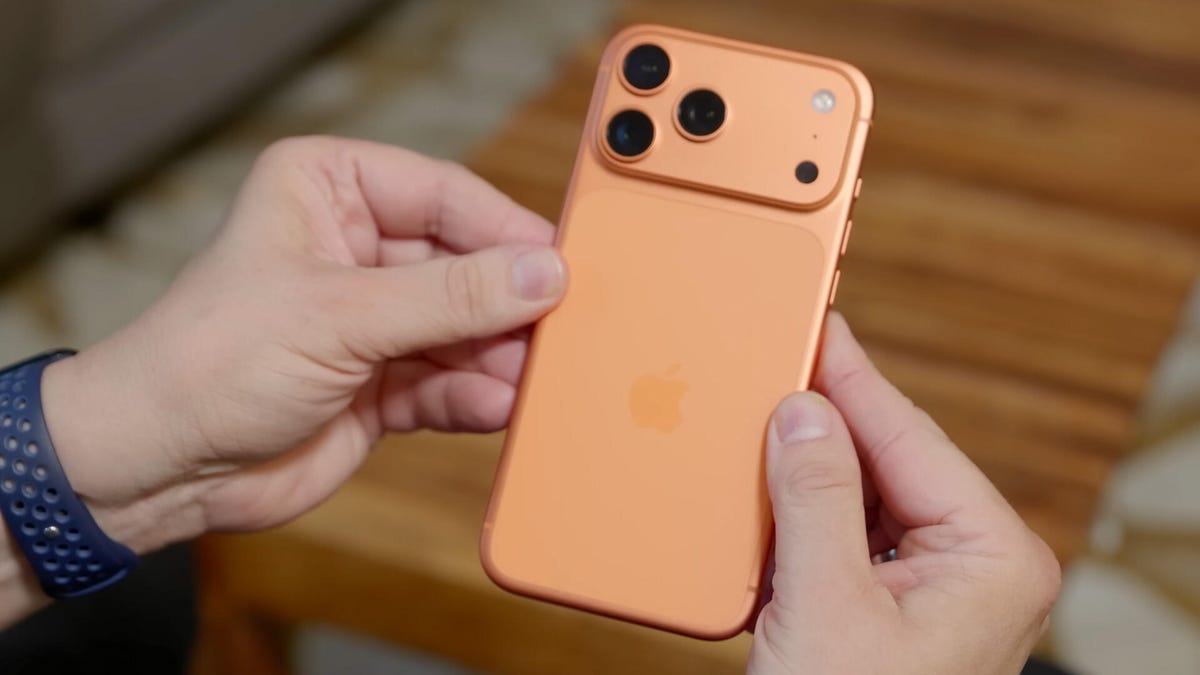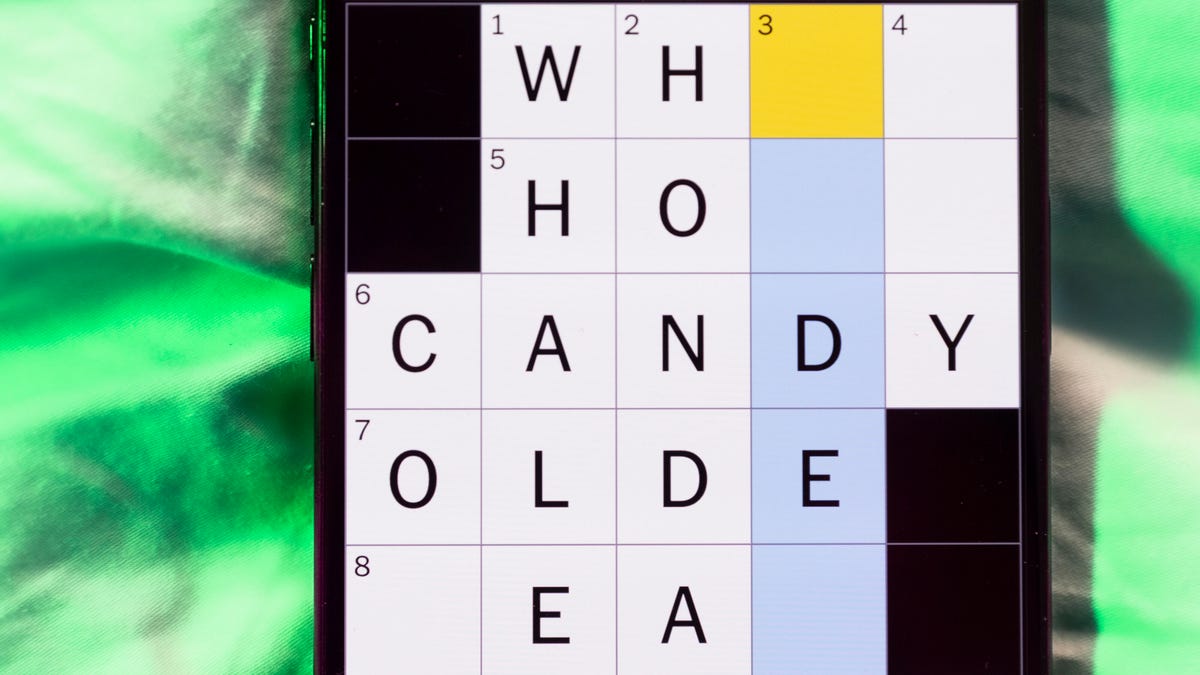Technologies
Razer Edge Review in Progress: Caught Between Switch and Steam Deck
Razer’s new gaming handheld isn’t enough of any single thing so far. Could it be enough for you?

The Razer Edge isn’t Razer’s first gaming handheld. That honor goes to the original Razer Edge, a large experimental gaming PC tablet that I reviewed a decade ago. Handheld gaming hardware has come a long way since then, and so has Razer, a company known for stellar laptops and gaming peripherals. I wish I could say the Razer Edge was as good as most serious gamers might hope it would be, but this first effort seems meager after being spoiled by Switch and Steam Deck.
I watched my 14-year-old son play Elden Ring on the Razer Edge one morning, and I asked him how it felt. He’s already beaten Elden Ring and keeps playing it on the Xbox Series X. He told me he wouldn’t go back to the Razer Edge to play for several reasons. First, the controller quality. He felt it was a big step back from playing on an Xbox controller, and he isn’t wrong.
The Razer Edge is an Android handheld, a 6.8-inch phone-type mini tablet that comes with a clip-on USB-C controller. Razer already has Kishi game controllers for phones, which are similar to the Backbone One and can turn phones into little gaming handhelds for around $100. The Edge is basically that same type of controller, bundled with its own mini tablet. At $400 for the Wi-Fi version, the price isn’t awful. You could think of this as paying $300 more for a 6.8-inch AMOLED-dedicated mini tablet, which is equipped with a brand-new Qualcomm Snapdragon G3X gaming-focused chipset.
I’m reviewing a Verizon version with 5G that costs more. It’s $600, or $360 if you sign up for a $10/month 5G wireless plan. I briefly tried the Razer Edge in Las Vegas earlier this year, but here are my thoughts after playing at home for longer.
It’s not a Steam Deck
If you think you’re getting a Steam Deck-alike here, well… you’re not. The Edge is pure Android and runs apps off the Google Play store. You’ll have a standard selection of Android games that you’d also get on your phone, many of which work with the Edge controller scheme. You could use the Edge mini tablet to access other Android apps, like Gmail, Marvel Snap or Chrome.
You can run streaming games on the Edge, similar to your phone or tablet. I locally streamed Xbox games and played Xbox Game Pass games streaming from the cloud. There’s Steam Link local-game streaming (if you have a gaming PC) and Nvidia GeForce Now cloud-streaming game support, too. Verizon anticipates you’ll use the Edge to stream games on the go, via 5G.
While the Edge can decently run the streaming games I’ve played on the Xbox so far, it doesn’t feel as impressive as I’d hoped for. The controller seems a step below normal game console controls. The triggers and buttons are fine, but shallower and more hollow-feeling. Also, although Razer supports haptics on these controllers, I have yet to play a game that can use them (and haptics are a big deal for me).
The Edge’s display, while beautifully vivid, is long like a phone. PC and console games end up pillar-boxed, shrinking the playable space and leaving extra-large bezels on the sides. It turns what seems like a big screen into one not quite so big — and for console games designed for big screens, it makes text and menus super small and hard to read.
It’s not a Switch
The Edge also lacks a few things that I’ve taken for granted on the 6-year-old Nintendo Switch. The Switch can easily dock with a TV to become a regular sofa console, or it can be a handheld. It also has detachable wireless controllers and a kickstand. The Edge, meanwhile, is designed to be purely a handheld. And its controller, which stretches and plugs into the tablet, doesn’t work wirelessly. There’s no kickstand, either.
I would love a more modular design — for instance, if I wanted to prop it up on a table with a kickstand or dock. The handheld design is OK, and after all, the Steam Deck does the same (though the Steam Deck has an optional dock like the Switch). But the Steam Deck’s controls feel more refined. The Edge has the limits of a handheld-only design with few perks.
It’s not a phone
Also, it’s good to remember that the Edge isn’t a phone, even if it resembles one. The 5G model can connect to cellular, and you could certainly try video chat or other calls with it. However, the Edge only has one camera (front-facing), and it lacks a fingerprint sensor.
It also has some pretty noisy fans in the back that purr while the system is on, meaning it definitely isn’t water-resistant. The fans kick in quite a bit, even when the system seems to be in sleep mode. I’ve found battery life on standby can disappear fast, but then again, this is with 5G on.
Still, you could easily use the Edge as a small handheld tablet for reading, videos, mail, social media and whatever else. It’s a fully equipped smart device, although the 128GB onboard storage means you’ll probably want to add a microSD card. I haven’t felt the need to do so yet, mostly because all the games I’ve wanted to play are streaming.
A good idea, but an imperfect landing
I’m only harping on the downsides because Razer has excellent game controller products, and the company can clearly make fantastic hardware. I’d love to see more thought put into how a handheld could be not only serviceable, but designed perfectly, with more modularity and a display with a better aspect ratio.
There’s also a weird element with the target audience and software library. The Switch leans on Nintendo’s eShop, and the Steam Deck has Steam. The Razer Edge has a split focus on Android games, Steam Link, Xbox Game Pass and other streaming options like Nvidia GeForce Now. Much like the Logitech G Cloud, another Android device aimed at streamers, it feels a little redundant or superfluous.
While the Edge is functional enough, if you own a newer smartphone, you could simply buy a controller accessory instead. The Razer Edge doesn’t excel in any one area for me, and that’s why I’d like to see the overall idea pushed further. Whether Razer and Qualcomm will choose to do that remains to be seen.
Technologies
iPhone 17 Preorders Spike and Overall Phone Sales Aren’t Slowing Down Despite Tariffs
Global smartphone shipments saw a notable increase in the third quarter of 2025. Plus, preorders for Apple’s new iPhone 17 beat out the iPhone 16.

Despite tariffs and market uncertainty, global smartphone shipments increased 2.6% in the third quarter of 2025, compared to the same time last year, according to the International Data Corporation. Additionally, preorders for the iPhone 17, which launched last month, outpaced last year’s iPhone 16.
These increased sales include premium phones like the latest iPhones and Samsung foldables, suggesting yet again that pricier phones still sell in periods of economic strain. It’s a remarkable achievement, says IDC senior research director Nabila Popal, citing shrewd financing options as the reason people keep buying these high-end phones, which cost anywhere from $800 to nearly $2,000.
«[Phone makers] have mastered the art of innovation not only in hardware and software to entice upgrades but also in removing purchase friction. They have flawlessly combined cutting-edge devices with innovative financing models and aggressive trade-in programs that make the upgrading decision a ‘no-brainer’ for consumers,» Popal said in an IDC press release.
Apple sold 58.6 million iPhones this quarter, an increase of 2.9% over the same period in 2024, with more preorders for the iPhone 17 series than its predecessor. But Samsung wasn’t far behind, with its Galaxy Z Fold 7 and Galaxy Z Flip 7 selling better than all of the company’s prior foldables. The company still reigns atop the phone market with 61.4 million phones sold, representing 19% of the market in the third quarter of this year — an increase of 6.3% from the same period last year. Meanwhile, Apple lands slightly behind Samsung with 18.2% market share this quarter.
The other phone makers trailing Apple and Samsung are, in order: Xiaomi, with 13.5% of the market; Transsion, with 9%; and Vivo with 8.9%. The remaining companies in the phones industry, from Chinese stalwarts like Oppo and Honor to Motorola and Google, make up the remaining 31.4% of the market for the quarter. All told, 322.7 million phones were sold, up from 314.6 million in the third quarter of 2024, according to IDC.
IDC’s findings for the third quarter continue the small but steady growth of phone sales over the year, including a modest 1% increase in the preceding three months — which includes the April deadline when President Donald Trump unveiled sweeping tariffs. In the second quarter, IDC cited midrange devices like Samsung’s Galaxy A36 and other phones that started incorporating AI. But even persistent tariffs haven’t slowed down people’s appetites for pricier phones in the third quarter.
Technologies
Today’s NYT Mini Crossword Answers for Tuesday, Oct. 14
Here are the answers for The New York Times Mini Crossword for Oct. 14.

Looking for the most recent Mini Crossword answer? Click here for today’s Mini Crossword hints, as well as our daily answers and hints for The New York Times Wordle, Strands, Connections and Connections: Sports Edition puzzles.
Today’s Mini Crossword has an odd vertical shape, with an extra Across clue, and only four Down clues. The clues are not terribly difficult, but one or two could be tricky. Read on if you need the answers. And if you could use some hints and guidance for daily solving, check out our Mini Crossword tips.
If you’re looking for today’s Wordle, Connections, Connections: Sports Edition and Strands answers, you can visit CNET’s NYT puzzle hints page.
Read more: Tips and Tricks for Solving The New York Times Mini Crossword
Let’s get to those Mini Crossword clues and answers.
Mini across clues and answers
1A clue: Smokes, informally
Answer: CIGS
5A clue: «Don’t have ___, man!» (Bart Simpson catchphrase)
Answer: ACOW
6A clue: What the vehicle in «lane one» of this crossword is winning?
Answer: RACE
7A clue: Pitt of Hollywood
Answer: BRAD
8A clue: «Yeah, whatever»
Answer: SURE
9A clue: Rd. crossers
Answer: STS
Mini down clues and answers
1D clue: Things to «load» before a marathon
Answer: CARBS
2D clue: Mythical figure who inspired the idiom «fly too close to the sun»
Answer: ICARUS
3D clue: Zoomer around a small track
Answer: GOCART
4D clue: Neighbors of Norwegians
Answer: SWEDES
Technologies
Watch SpaceX’s Starship Flight Test 11
-

 Technologies3 года ago
Technologies3 года agoTech Companies Need to Be Held Accountable for Security, Experts Say
-

 Technologies3 года ago
Technologies3 года agoBest Handheld Game Console in 2023
-

 Technologies3 года ago
Technologies3 года agoTighten Up Your VR Game With the Best Head Straps for Quest 2
-

 Technologies4 года ago
Technologies4 года agoVerum, Wickr and Threema: next generation secured messengers
-

 Technologies4 года ago
Technologies4 года agoGoogle to require vaccinations as Silicon Valley rethinks return-to-office policies
-

 Technologies4 года ago
Technologies4 года agoBlack Friday 2021: The best deals on TVs, headphones, kitchenware, and more
-

 Technologies4 года ago
Technologies4 года agoOlivia Harlan Dekker for Verum Messenger
-

 Technologies4 года ago
Technologies4 года agoiPhone 13 event: How to watch Apple’s big announcement tomorrow
